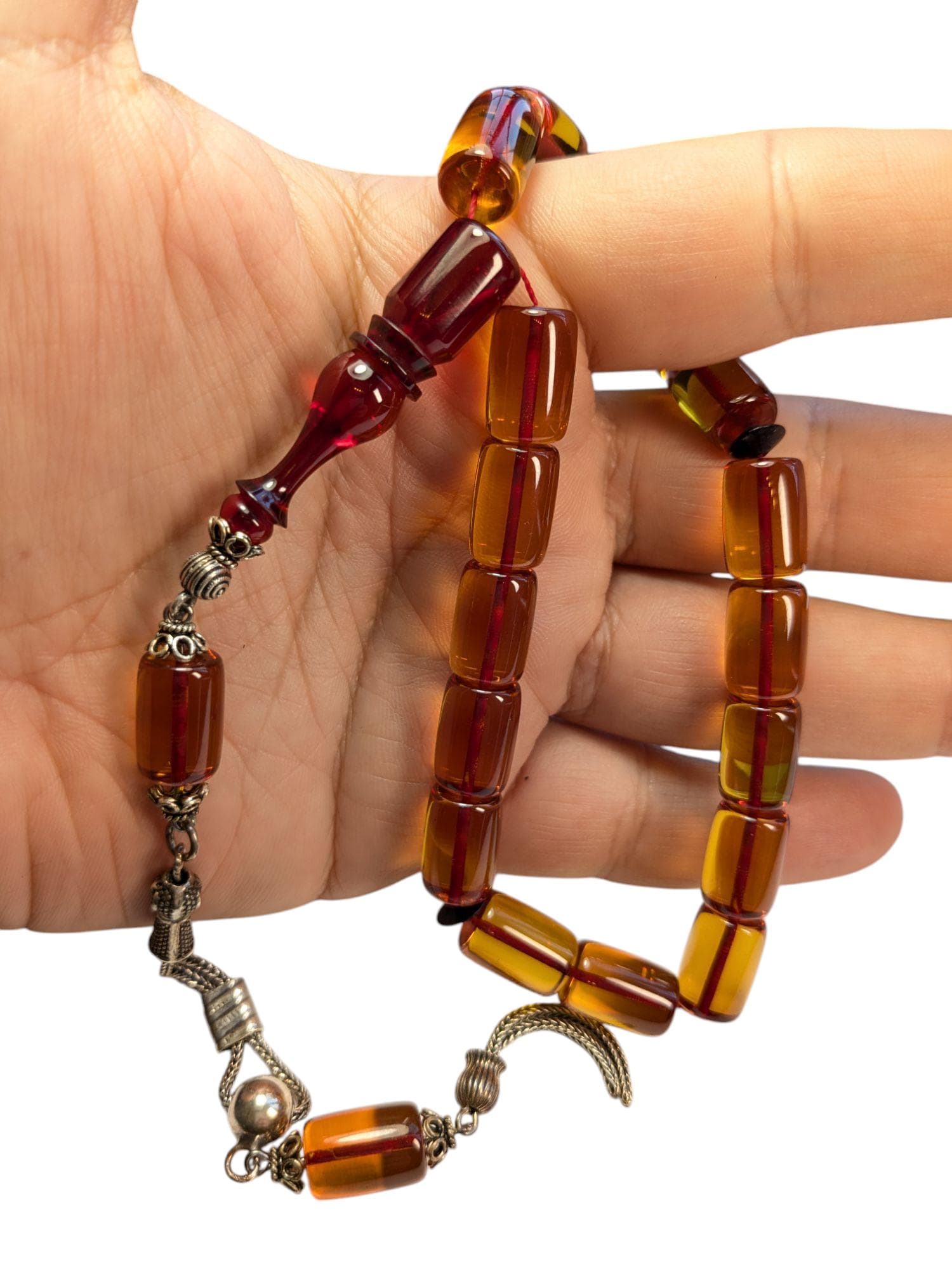When exploring the world of worry beads, you’ll often come across sets with 17, 19, or 21 beads—but why these numbers?
Whether you're browsing Greek style komboloi or Turkish Style Efe tesbih, the number of beads can carry significance, yet it serves different purposes in each cultural context. Let’s break it down.
Komboloi: Flow Over Faith
Komboloi, or Greek worry beads, are not religious tools. Unlike tasbihs or prayer ropes or rosaries, komboloi are not used for counting prayers or religious recitations. So what guides their design?
- No Set Number: Komboloi do not follow a fixed bead count. While many komboloi feature 21 beads, this number is more about balance and preference than spiritual significance.
- Odd Numbers Preferred: The use of an odd number (like 17, 19, or 21) creates a unique rhythm and sound when the beads are handled—something cherished by komboloi users for its calming effect.
- Symbolism of the Odd: Some suggest that an odd number may represent something indivisible or unique—a metaphor for individuality or wholeness.
- Tactile Pleasure: The bead count directly influences the sound, weight, and feel, which are crucial for the relaxing “click” and swing that komboloi are known for.
The odd number is mostly for “flow”—a smooth and satisfying motion that makes komboloi a tactile and auditory pleasure as well as it is balanced when you hold it. Komboloi are also loosely strung leaving a gap for the user between the beads for moving it around easily.
Efe Tesbih: Different Length, Similar Use
Although longer Muslim prayer beads (tesbih, misbaha, or subha) with 33 or 99 beads have spiritual and religious roles, the shorter variants mostly called as Efe tesbihleri—a type of "maskot" tesbih—are typically made with 17, 19, or 21 beads without any religious motive. These are not meant for pocket use, style, and play, especially among men in Turkey.
Different from Greek Komboloi, Turkish Mascot or Efe tesbih beads are:
- Tightly strung,
- Shorter in length,
- The gap between beads are 1-2 bead's size
- Designed for frequent, informal use,
- Known for their distinctive snap, weight, and elegant swing.
They are often used to calm the mind, pass time, or reflect personal style—echoing the komboloi's role, though in a distinctly different tradition.
⚖️ Choosing the Right Bead Count
So should you choose 17, 19, or 21 beads?
Here’s a quick guide:
>17 Beads** | Portability, minimalism | Lightweight and easy to carry
>19 Beads** | Aesthetic balance | A symbolic and uncommon choice
>21 Beads** | Fuller, richer swing | Popular in komboloi for tactile pleasure |
Usually 17 beads would have the largest bead size where as the 21 beads would have smallest beads size in comparison.
Ready to find your perfect set? Explore our latest handcrafted komboloi and tasbih designs at

